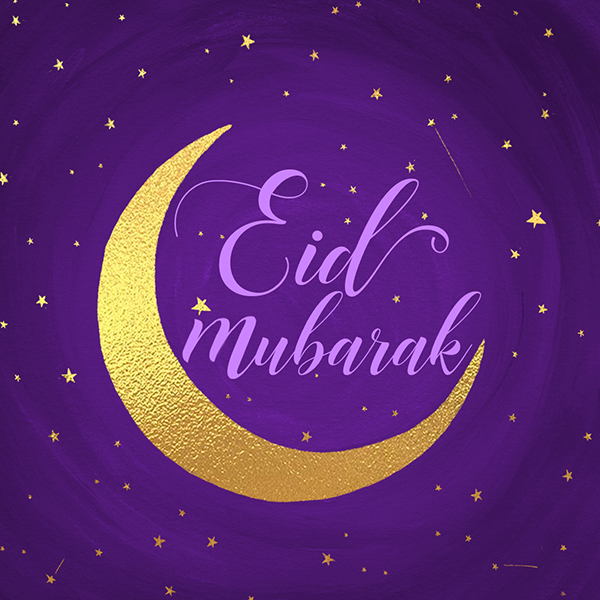“The holiday is one of the five pillars of Islam. It is a time where we are in worship and we give to charity. It is a time for renewal of the spirit, of my faith, of my connection to Allah—the Arabic word for God—and to the community.” —Mahnaz Shabbir, diversity speaker and consultant, Shabbir Advisors
Eid al-Fitr (pronounced eed uhl-FEE-truh) means “the Festival (or Feast) of Breaking the Fast.” Celebrated for a day or three (it varies around the world), Eid al-Fitr is a time for giving thanks to Allah, expressing joy for blessings, letting go of ill will and bad feelings, and welcoming others with open arms.
Muslims greet each other with “Eid Mubarak,” which translates to “Blessed Festival,” “Blessed Feast” or “Blessed Celebration” (less literally, it’s a wish for a happy Eid).
There are different ways to respond when someone says “Eid Mubarak,” depending on your part of the world:
- “Khair Mubarak” is a wish for goodwill.
- “Jazak Allah Khair” means “May Allah reward you with goodness.”
- “Taqaballahu minna wa minkum” means “May Allah accept it from you and us.” “It” can mean good deeds, worship, fasting—essentially, the spiritual commitment, good deeds and sacrifices made during Ramadan.
- You can also respond simply with “Eid Mubarak to you.”
“Another Eid tradition is to receive and send Eid cards to family
that don’t live close. I send my cards roughly 20 days before Eid so
the recipients have at least a week or more to proudly display all the
cards they have received from family, friends and loved ones.” —Sam
Lodhi, Hallmark manager
When is Eid al-Fitr?
Islam follows a lunar calendar, with 29- or 30-day months based on the moon’s phases. Eid begins with the sighting of the waxing crescent moon at the beginning of Shawwal, the tenth lunar month.
That means Eid al-Fitr dates on the Gregorian calendar (the one we follow in the US) change every year and really can’t be determined until the crescent moon is spotted.
Eid al-Fitr is expected to begin somewhere around the following evenings, depending on the appearance of the crescent moon:
- Thursday, May 13, 2021
- Tuesday, May 3, 2022
- Saturday, April 22, 2023
- Wednesday, April 10, 2024
